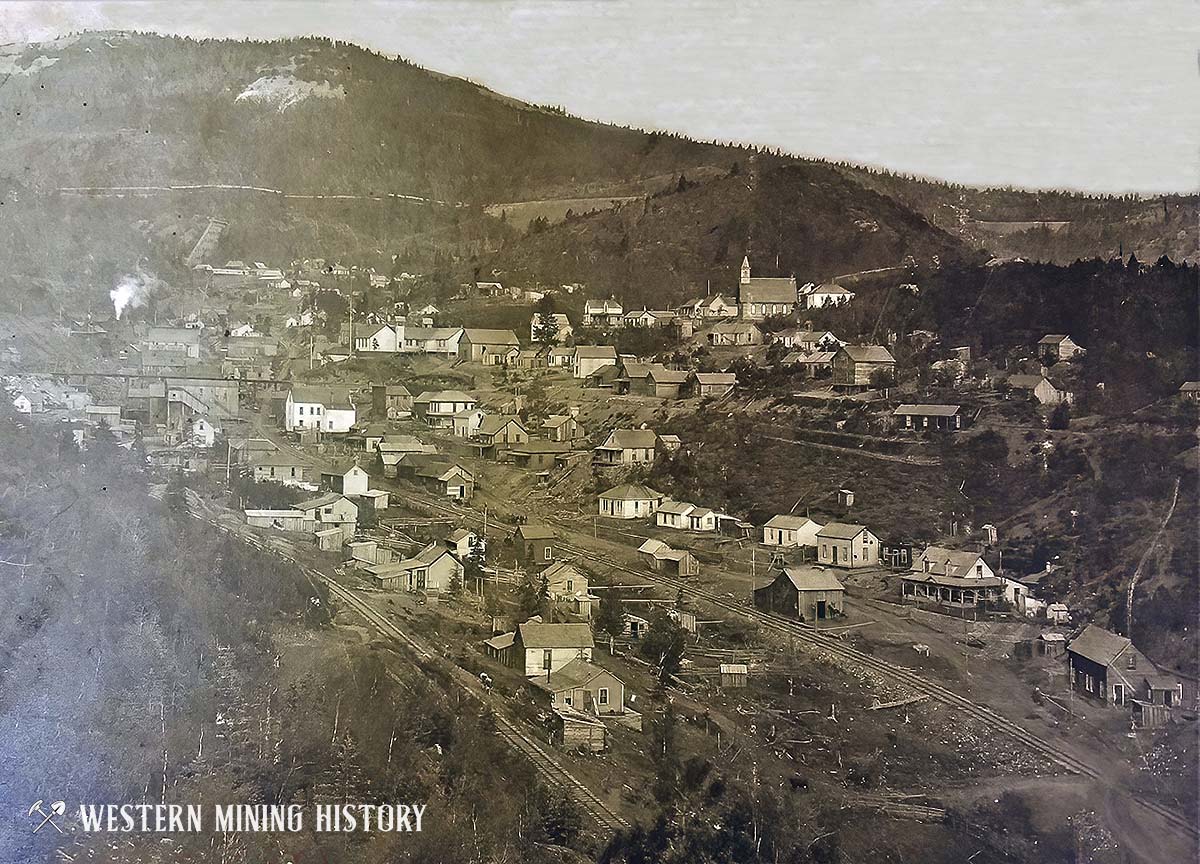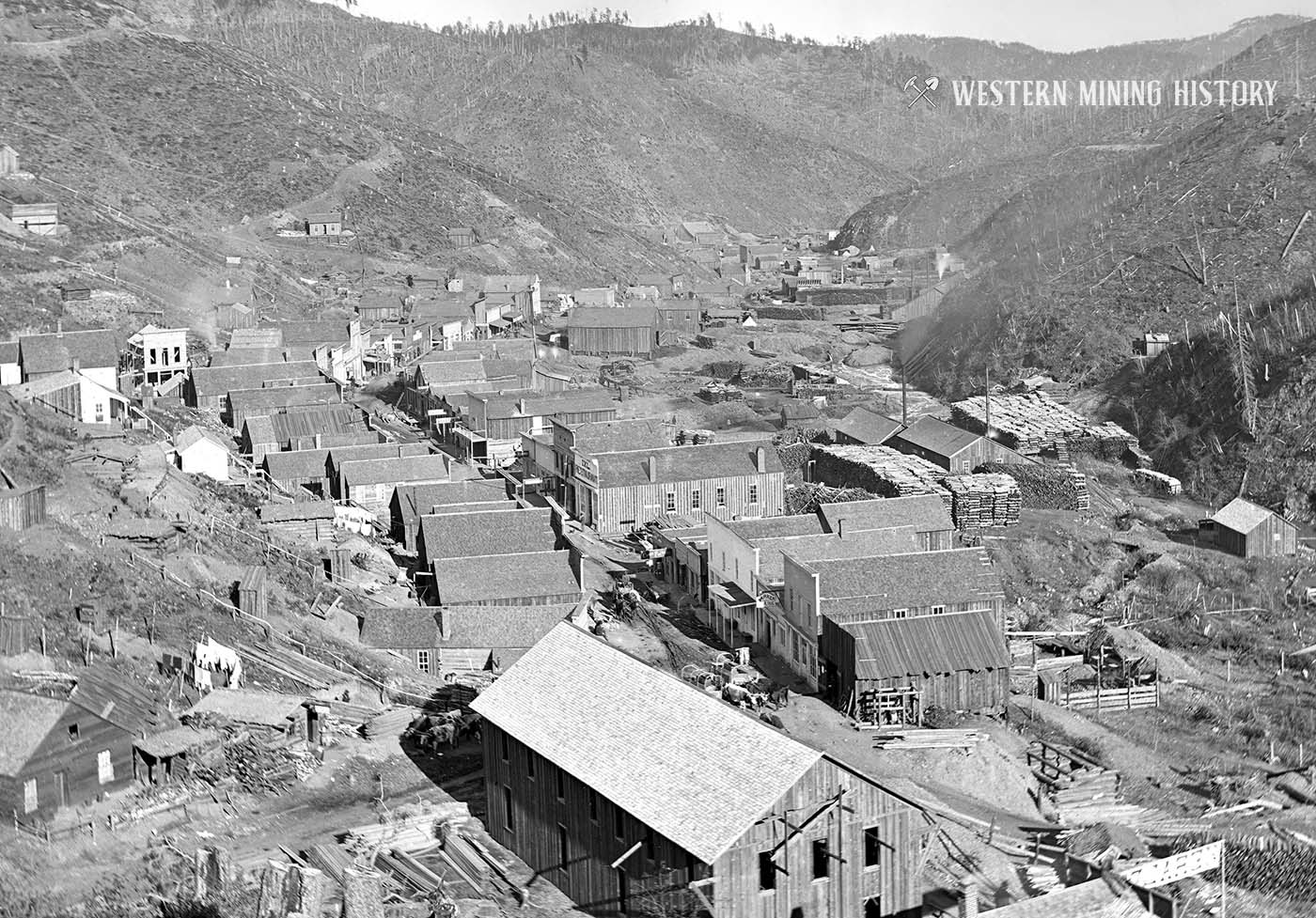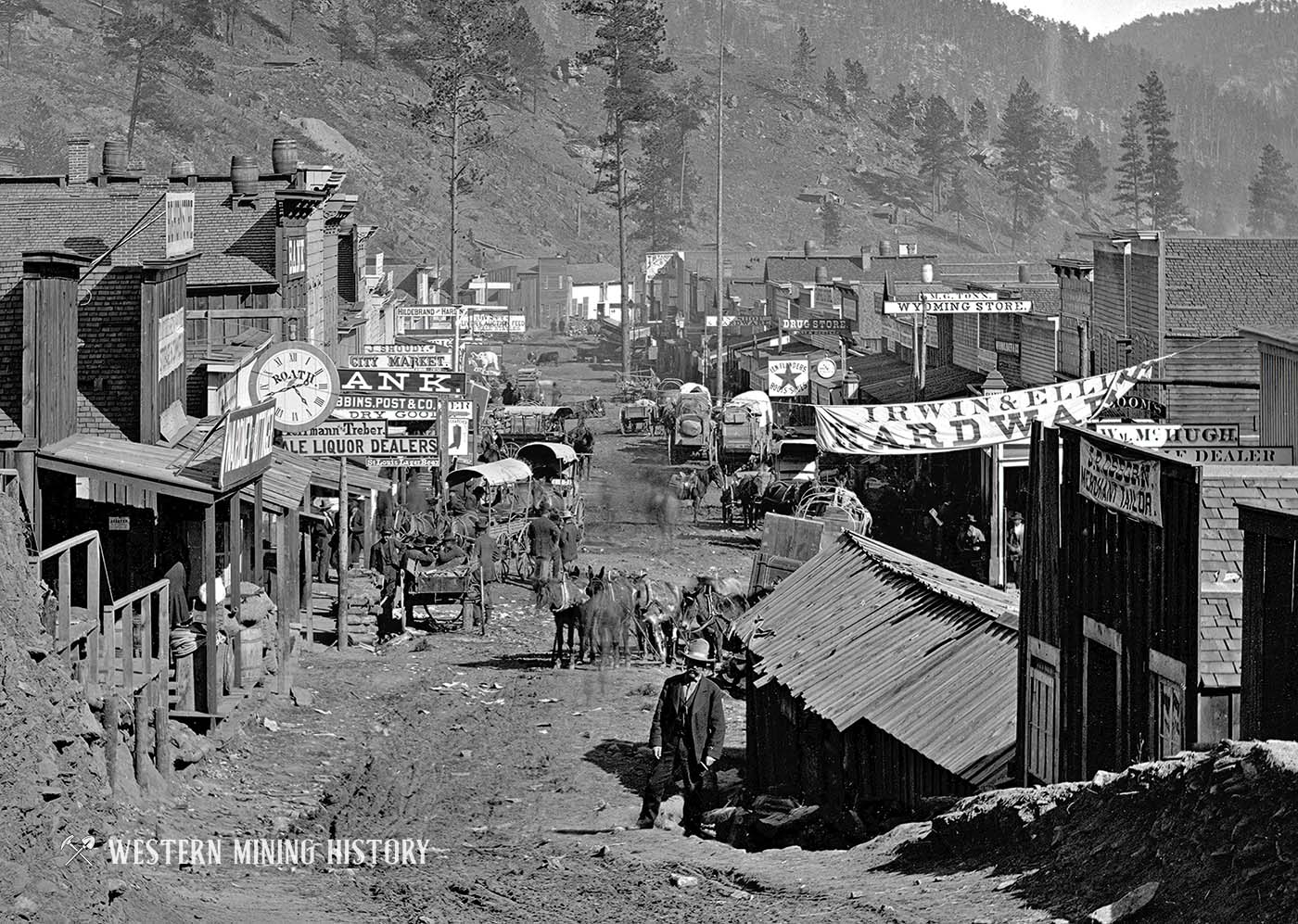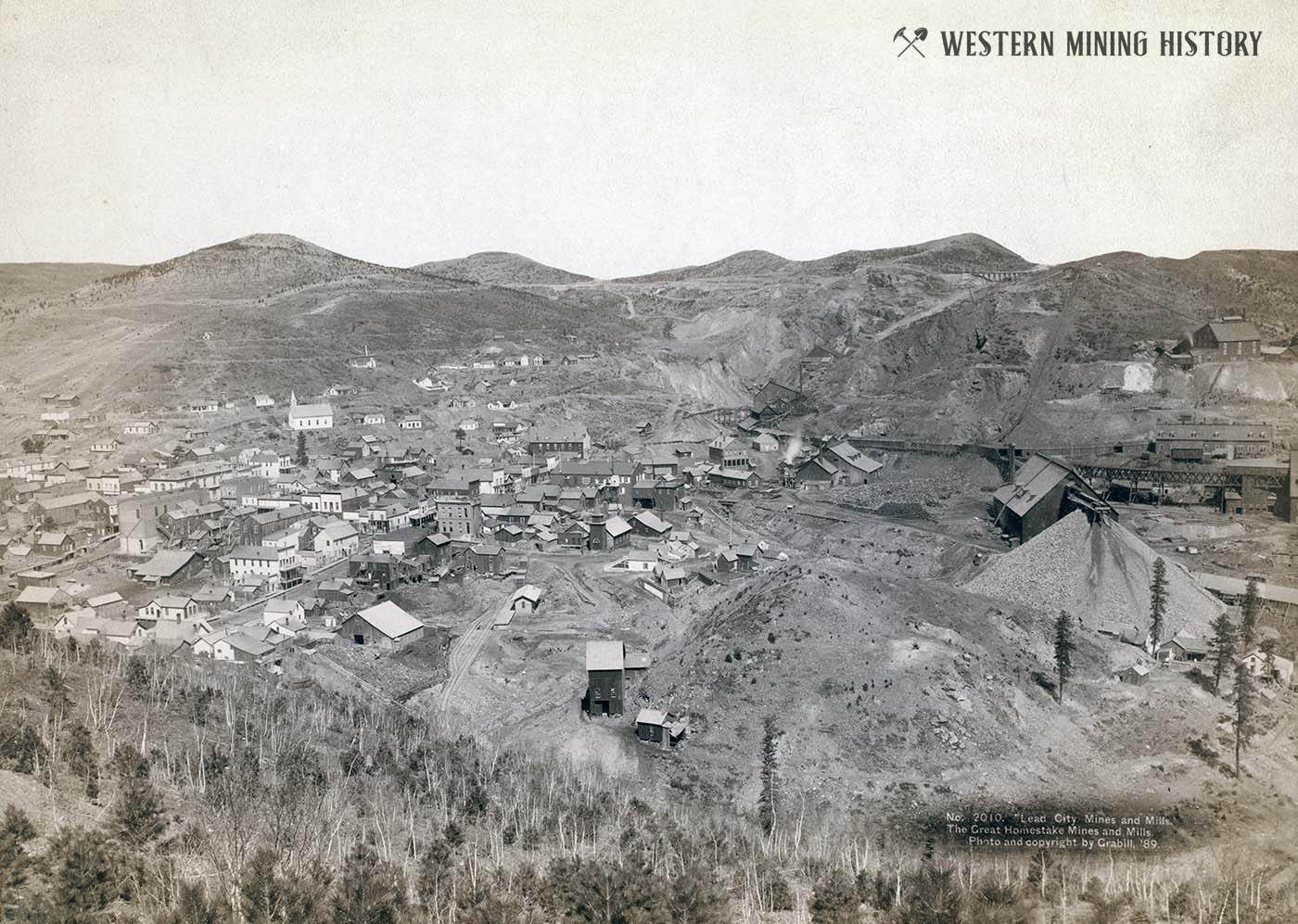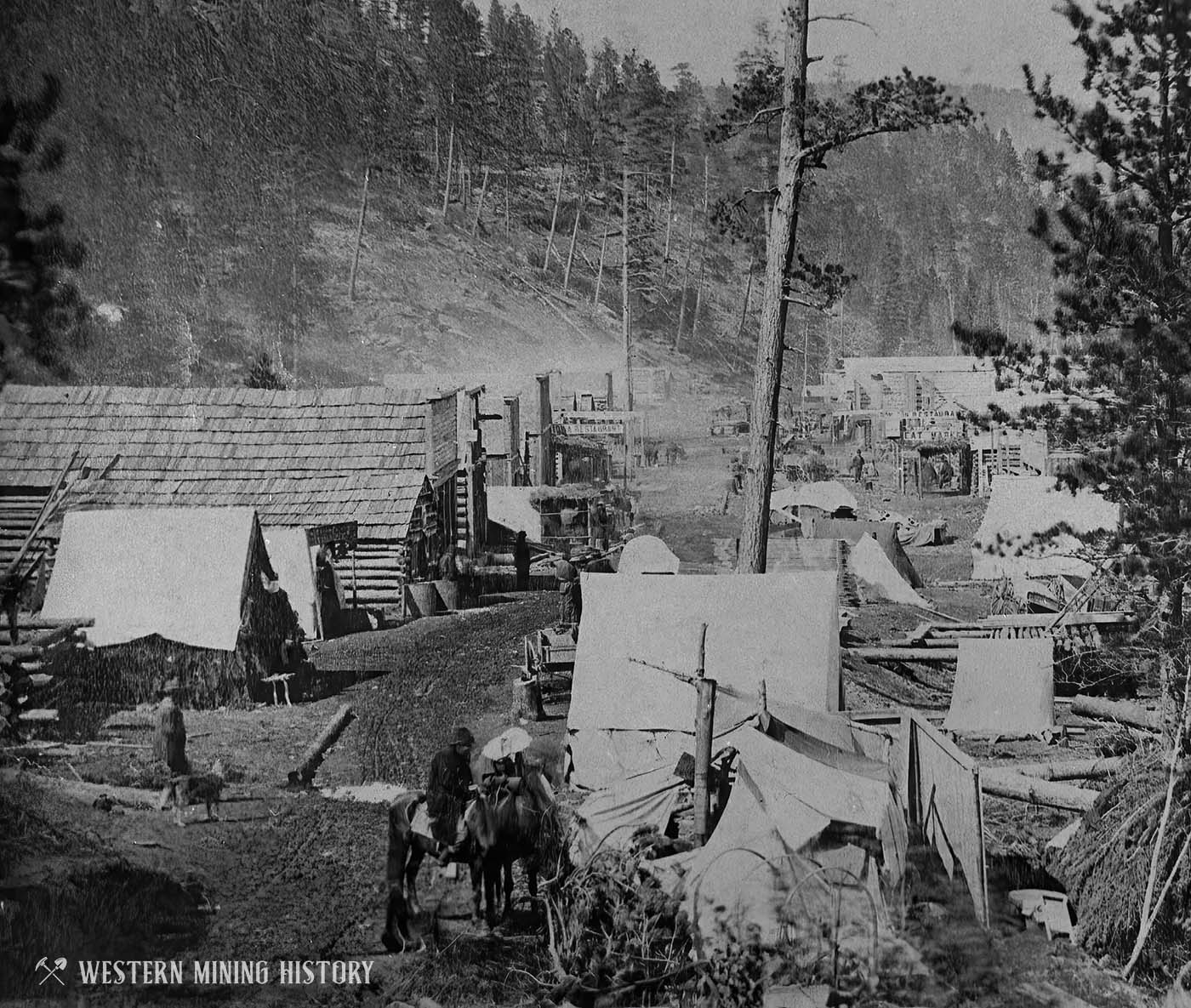Terry History
The town of Terry rose to prominence in the early 1890s as important hard rock mines like the Golden Reward and others started producing at scale. In 1904 the town had around 1,200 residents.
Terry sat high on the slope of Terry Peak, and a railroad spur was built from Central City with its terminus at Terry. The fact that the mines at Terry were important enough to justify the expense of a railroad spur illustrates what an important mining area this was.
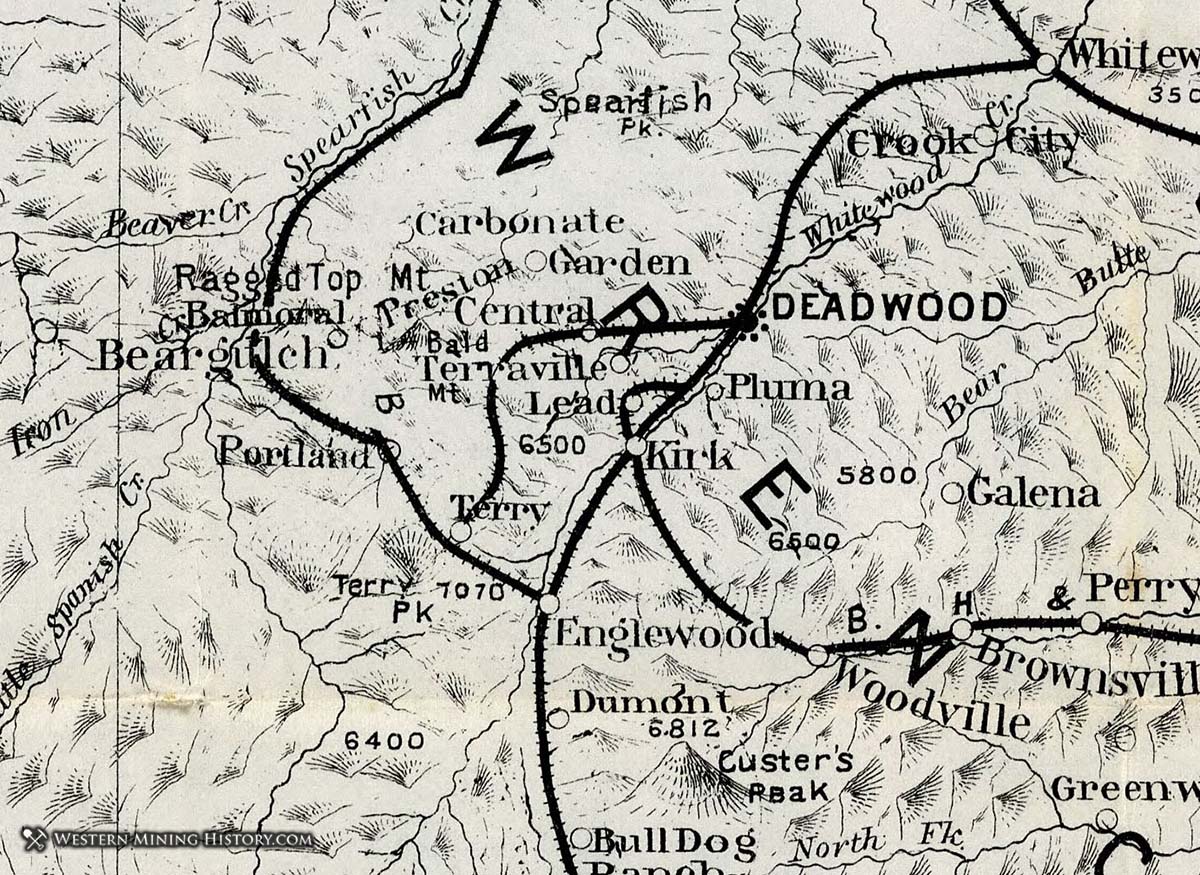
Ultimately Terry was consumed by open-pit mining. Terry had a post office from 1892 to 1929.
Not much has been recorded of the details of the community of Terry, with the exception of the publication Black Hills Illustrated from 1904. The following section uses selected text from that book.
Terry Described in 1904
About the year 1891, flat formation ore bodies carrying gold of more than ordinary value were the means of bringing the present location of Terry into prominence. The town is located about four miles from Lead and seven from Deadwood by way of Lead. This town is the highest in altitude of any of the mining towns of the Black Hills,being 5,700 feet above the level of the sea.
The first workings were at the Welcome mine, which is now a part of the Horseshoe group of mines. Later came the discovery of the Nevada gulch formation, which was afterward acquired by the Golden Reward. This latter formation runs under the present townsite of Terry, which property is owned by the Golden Reward company.
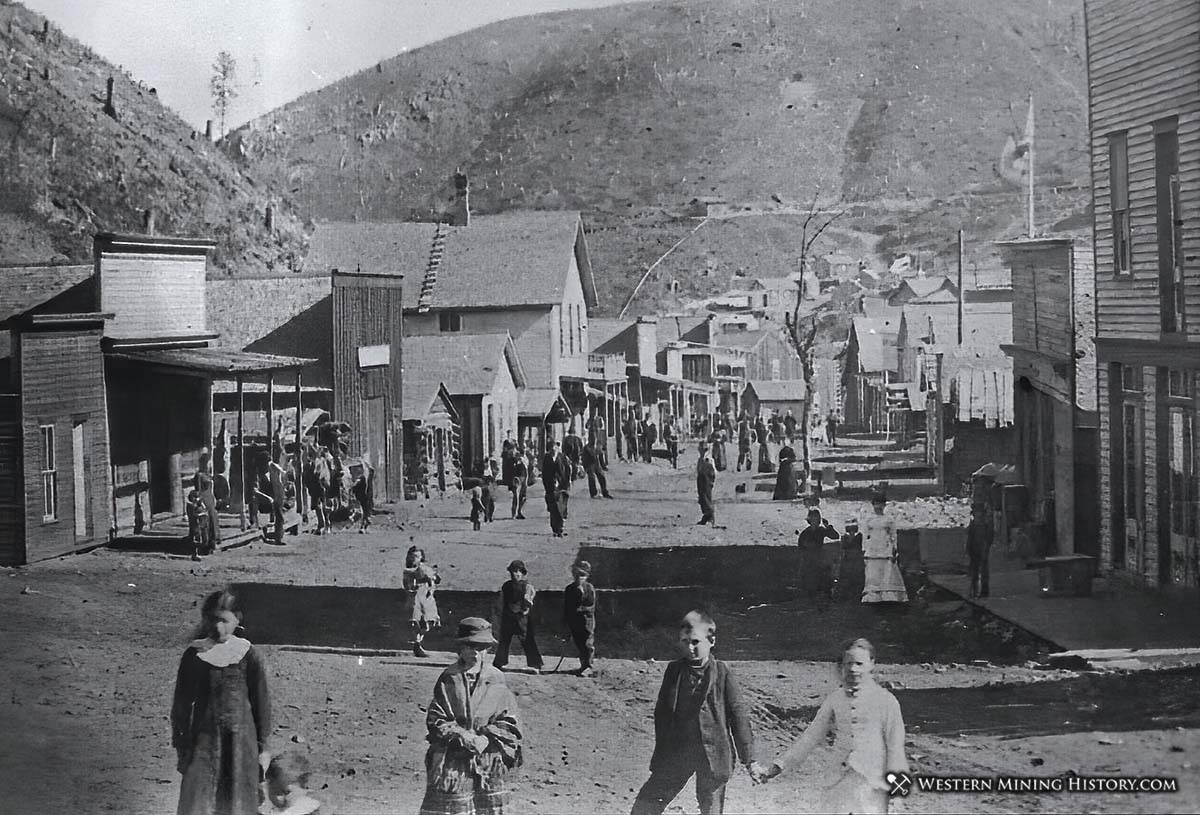
The Golden Reward company added at various times to its claims, until it now covers a very large territory and has proven to be so far the second richest mine of the Black Hills in quantity of gold production. The Golden Reward and Horseshoe companies are the great mainstay of Terry. The Horseshoe company has a cyanide plant on a hill above the town. The Golden Reward mill is at Deadwood, where they also have a smelter.
Terry is situated on the Spearfish line of the Burlington railway, and two narrow-gauge systems of the Northwestern and Burlington respectively make it their terminus in lines from Leadwood. These narrow-gauge lines are used for the transportation of ore.
Terry's population is about 1,200 souls. Water supplying the town is drawn from wells and springs, while a 500-barrel tank above the hill is kept full of water by the Toronado hoist and a pipe is laid through the town, giving an excellent pressure for fire purposes. The fire department has a hose cart and is composed of some 50 volunteers.
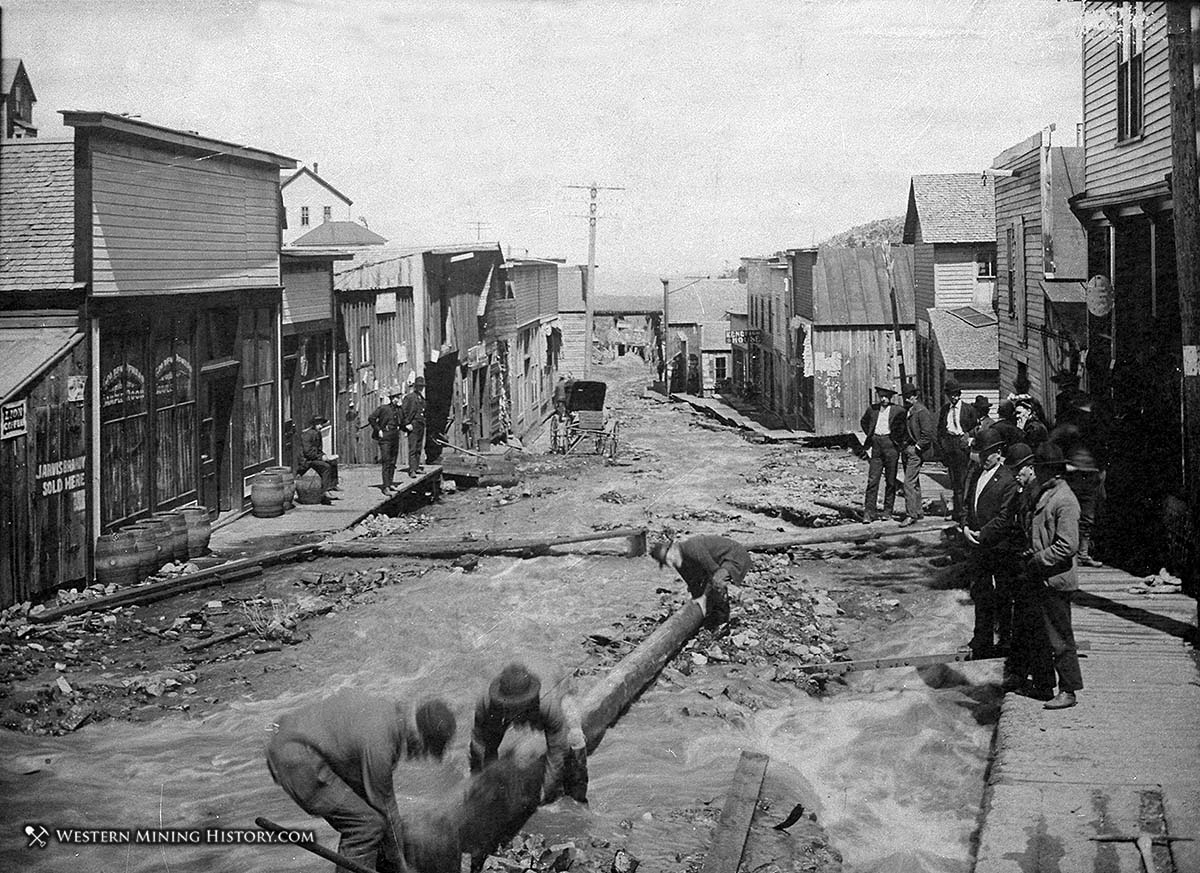
The town has a school board and two school buildings, one containing four rooms and the other one, the former having four teachers. The capacity of the two schools together is 300 pupils, and every year or two requires an addition to accommodations. There are three hotels, all of good capacity and very good houses. The churches number two, one of which is a Methodist and the other Catholic.
In societies, Masons, A. O. U. W., Knights of Pythias, Improved Order of Red Men, Rebekahs and Court of Honor all have strong allegiance. The Western Federation of Miners, composed of 700 members, is the most prosperous branch of the Federation in the Black Hills; it is No. 5, and owns its own building, with a large hall on the second story. This building was erected when there were only 38 members.
The site of Terry is one of the most beautiful in the Hills. Notwithstanding its high altitude, it is surrounded by peaks in every direction, including Terry Peak (within easy walking distance), some 1,500 feet higher than the town and from which one of the most beautiful panoramic views to be had in the Hills are found.
The future of Terry seems a very bright one. The flat formations are such as to guarantee an increasing prosperity for the merchants for many years to come, and, after the flat, the vertical formations will undoubtedly yield a practically inexhaustible supply of wealth.
Nearby Mining Towns
These are a selection of notable mining towns near Terry.
Central City
Central City, South Dakota was one of the Black Hills earliest, and most important mining settlements. In 1877, a conflict between the neighboring Aurora and Keets mines resulted in the death of one of the mine owners, and later the same year a strike at the Keets required intervention by Sheriff Seth Bullock and federal troops.
Deadwood
Deadwood, South Dakota is one of the West's most historically significant mining cities, and the location of some of the Wild West's most notable events. Deadwood has seen extensive preservation of its historical buildings, and is a popular tourist center.
Lead
Lead, South Dakota is the location of the Homestake - the nation's greatest gold mine. This mine operated for 125 years and produced over 40 million ounces of gold. As the mine grew, so did Lead, becoming one of the West's most important mining cities.
Mining in the Black Hills
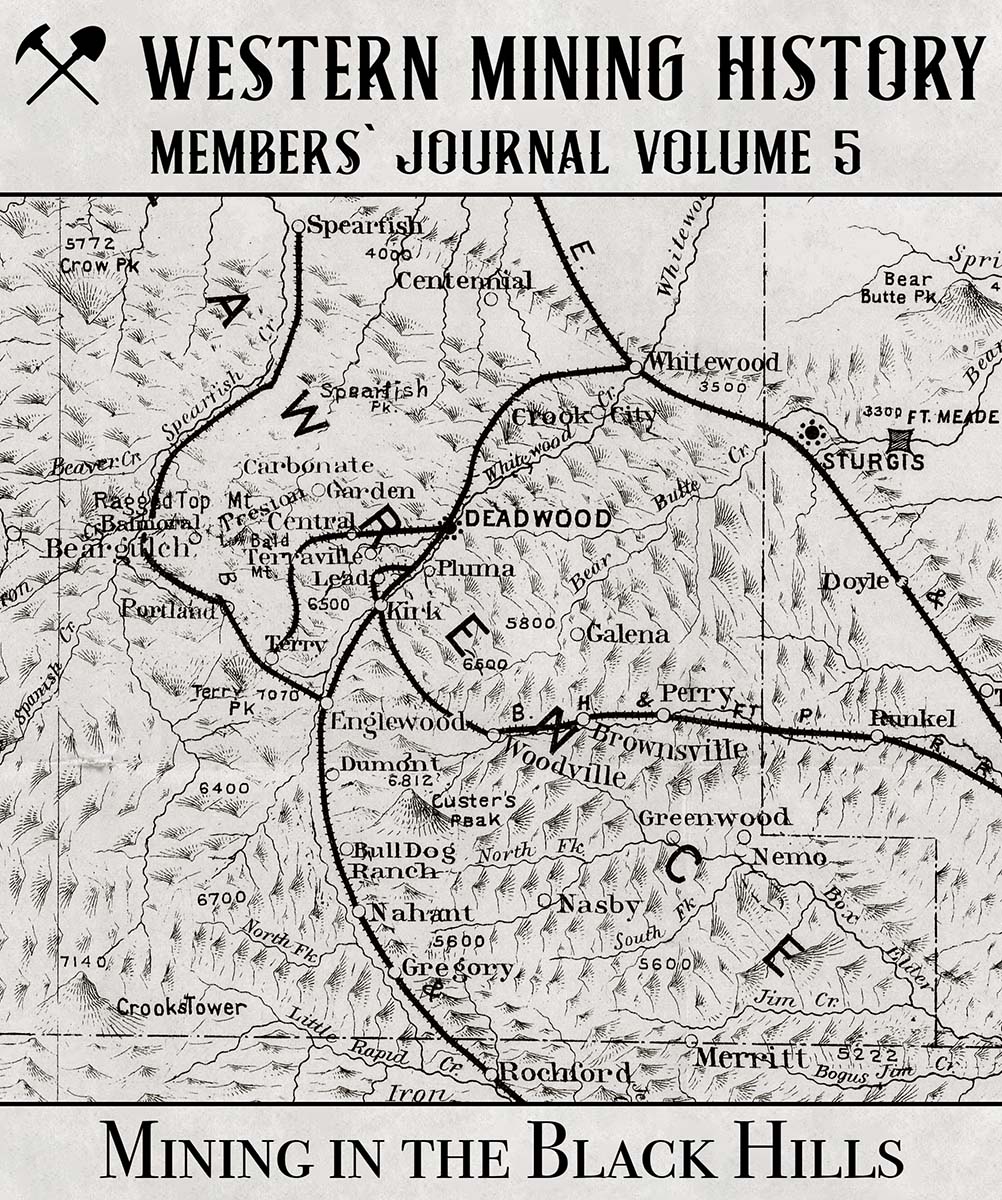
Western Mining History Member's Journal Volume 5: "Mining in the Black Hills", takes a closer look at the distribution of mining districts and towns the Black Hills of South Dakota.
Deadwood: The Ultimate Photo Collection
The Black Hills Gold Rush was one of the most significant historical events in the western United States. Deadwood: The Ultimate Photo Collection contains over 50 images capturing the early history of this famous gold region.
